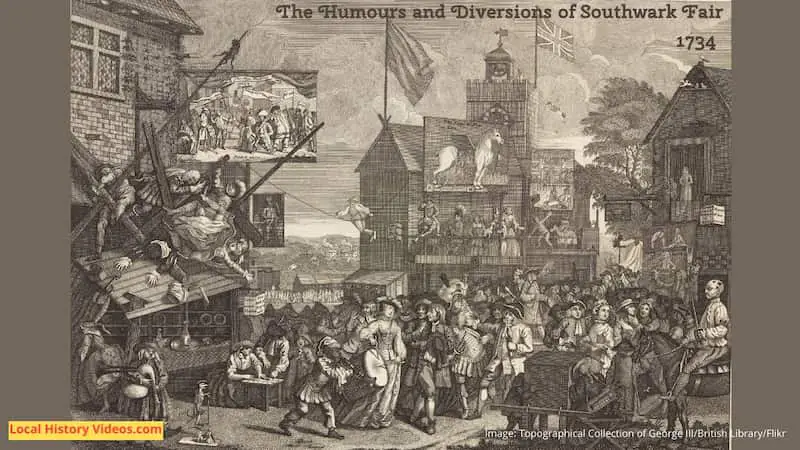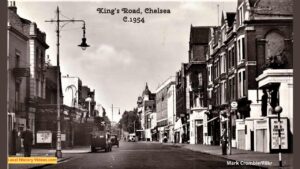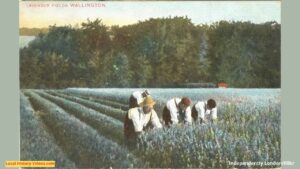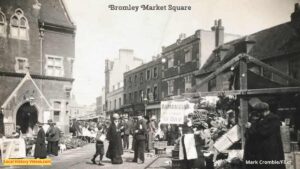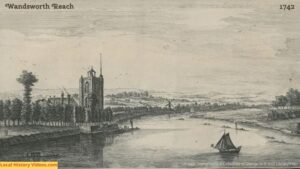Glimpse history through old images of Southwark, London, England.
Fire 1911
Two firemen died tackling a fire in Southwark on 31st December 1911. Early silent film recorded the debris left by the blaze.
FATAL FIRE AT SOUTHWARK – NO SOUND – British Movietone
Explosion 1939
An explosion outside the Central Electricity Board’s control station at Southwark on 19th January 1939 smashed all the windows of both the Noah’s Ark Pub at 92 Park Street and the nearby Queen’s Head pub.
The same day, Manchester and Crosby also suffered explosions, but they don’t seem to have been connected.
Explosion In Southwark – British Movietone on YouTube
Southwark Park 1967
A home movie records families enjoying the facilities at Southwark Park in 1967, including the cafe, and the lido (which today is the site of a playground).
You can also see some of the blocks of flats around the park.
Southwark Park 1967 – Patrick Long on YouTube
Gentrification 1973
When engineering works and the docks were being replaced with hotels, offices and new high-cost flats, local residents in 1973 were concerned that developers were about to price them out of the area.
There were 7,000 people on the council’s housing list at the time.
1970s Southwark | Gentrification of Southwark | Developers move in | Something to say | 1973 – ThamesTv on YouTube
Southwark in 1984
In 1984, members of the Black and Asian communities living in the borough were interviewed about their lives in Southwark, and their experiences of prejudice and racism.
At the time, these communities were made up of about 40,000 people, roughly 20% of the borough’s population.
Unemployment in the borough ran at 20%, with 21,600 people on the dole.
The council controlled almost 70% of all the 63,000 properties in the borough, from former GLC properties to those they had built themselves in the 1960s and 70s. Nearly a third of the properties were classed as ‘hard to let’, particularly around Peckham and East Dulwich.
There are many local people interviewed or seen going about their daily lives, as well as a wide variety of locations seen.
At Brunswick Park Junior School, the teachers had read through all their books and removed the ones containing racist terms and concepts. They had also had to implement anti-racist teaching, thinking about they taught in an inclusive environment. There are lots of scenes outside and inside the school building.
Not Our Problem (1984) – LondonsScreenArchive
Historic Book
Extract from “Old Southwark and Its People” by William Rendle
Published in 1878
Pages 1-3:
“We who see Southwark in 1878 with its widely spread acreage of dwellings , shops , and warehouses , with its population of 140,000 people , can scarcely realize its early condition , when it was a forest of trees , ” so dark in Paris Garden that the eyes of a lynx or a cat were needed to find a man , ” when the broom men of Kent Street gathered their broom near at hand, in Sayes Court Wood , when dwellings were almost confined to the neighbourhood of the bridge and to the main central thoroughfare , and when Royal visitors at Suffolk House hunted in the park between St. George’s Fields and the river.
Then the ground was intersected with open streams and ditches crossed by smaller or larger bridges, of which there were many scores in Southwark.
This condition of things continued down to nearly my own time . In 1818 a house was built for my father in the midst of a field within eight minutes’ walk of London Bridge.
Gerard in his Herball , ‘ 1597 , tells of ” the hedgehog grasse growing in watery ditches by Paris Garden Bridge and in St. George’s Fields ; of the frogbit found floating in almost every pool ; of the crowfoot found in lakes and slowly running or standing waters , mostly in St. George’s Fields; of the bitter – sweet in the ditch by the house of the Earl of Sussex in Bermondsey , in a court which is full of trees by the farm-house in the Grange .
The whole place was mostly a swamp or a marsh , kept above water by extreme care of the river banks , which , uncared for , would have led , as it did more than once , to the temporary drowning of the lands of Southwark and Bermondsey.
Diseases consequent upon a moist and foetid atmosphere were common and deadly . Diseases such as dysenteries , agues , plague fevers , and sweating sickness , abounded – now with the causes gone or almost unknown here in England .
The word ” dyck ” appears in the map twice ( 64 , 64 ) ; the words would have been all over it had it been the purpose of the clerk to represent every feature of the district .
In my own collection , and in that of Guildhall , are certain parchments , ” Sewars Presentments ” of 1620 and 1640. They give with tolerable exactness the condition of the sewars ; in other words , the ditches of the time , now represented by channels carefully covered over , but which I have seen , within the last thirty or forty years , as open ditches , running between or behind the houses.
The bridges in the map ( 32 , 81 ) crossed such streams , and , as I have said , there were scores of them .
1518. The Court of Sewars levy 4d . per acre within one level ; the Queen , the Duke of Suffolk , and others liable are noted by name .
1620. A Jury meet at St. Margaret’s Hall in Southwark, and “super sacramentum,” and on their oathes say , e.g. , that Copley and his tenants in the Maze should amend two poles and a half of the bancke of the Sewar there , -the Sewar from Fostall Place , west side of Stonie street , is to be cast and clensed , ‘ – the Sewar by Rochester house is plagued with a filthy house of office . “
Another Session of Sewars , held in the same place in 1640 , presents – obstructions to the sewar in Deadman’s place ; hogs , a very frequent presentment , are kept within forty feet of the stream ; every one along St. George’s fields , Leg of Mutton fields , Prince’s meadow , & c . , is to cleanse his part of the stream , in the Maze a house of office over the sewar must be removed , in Crucifix lane , Horslydown lane , hogs are kept ; so that , to use a phrase of the time , the Sewar is annoyed , Gallie wall against Lowsie mead needs repair ; in 1599 , there was a lowsie meade’s stile in the Grange.
A cross ditch belonging to the cordwayners and a black ditch in St. Olave’s are noted.
The expences or rates levied are 12d . per acre in the levels of Duffield sluice , a Bermondsey sewar ; 25. per acre for whiting ground ; 10d . upon every tenant in the level , – ” whoso refuses shall within fourteen days forfeit as much more in nomine poenæ .”
Any one may form a fair notion of the course of these ancient ditches and waterways by studying a modern map of sewars ; these streams vary so little from age to age . It will be observed in these sewar presentments that the contents of the ” Houses of office , ” Trade refuse , ” Lay stalls , ” ” Sea cole ashes and dust , ” and , in short , any and every thing found its way into the ready watercourse , which was then the only drain for a swampy district .
The banks of the sewars when artificially made up , or in any way used , are known as wharfs , eg . , ” Tenements on wharf of sewar , Tenter Alley in the Maze ” ; ” the company of Cordwayners are to wharfe with piles , and boarde the banks of the cross ditch in Mayde Lane ” ; ” the wharf of Duffield Sluce in Bermondsey . “
St. Margaret’s Hall , in which the sewar dignitaries met , was no doubt the same as the Court – house of the map ( 22 ) , which had probably been part of the suppressed church of St. Margaret , and was the precursor of the modern Town Hall.”

